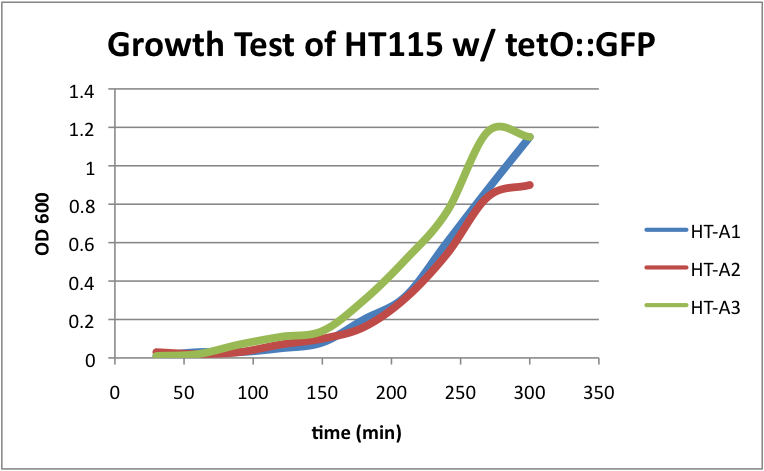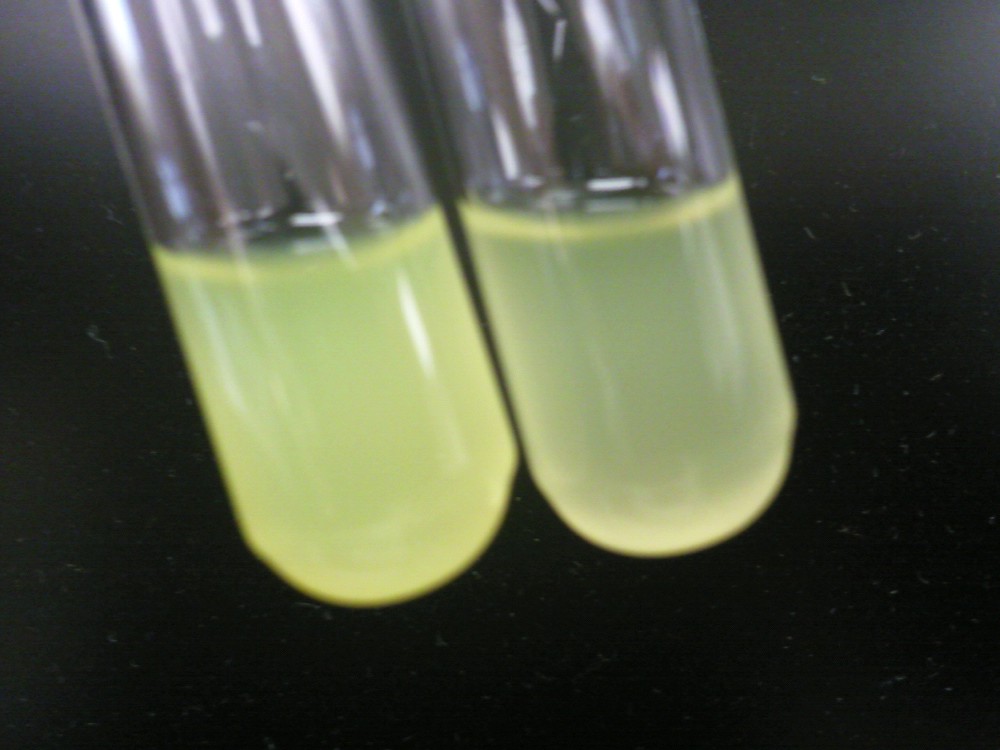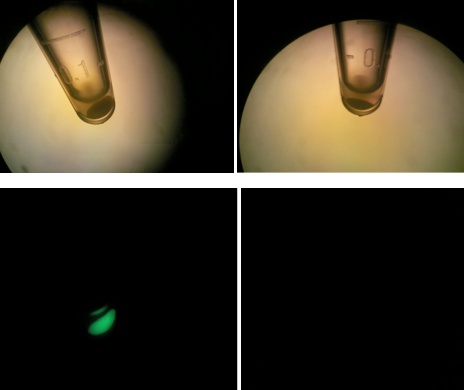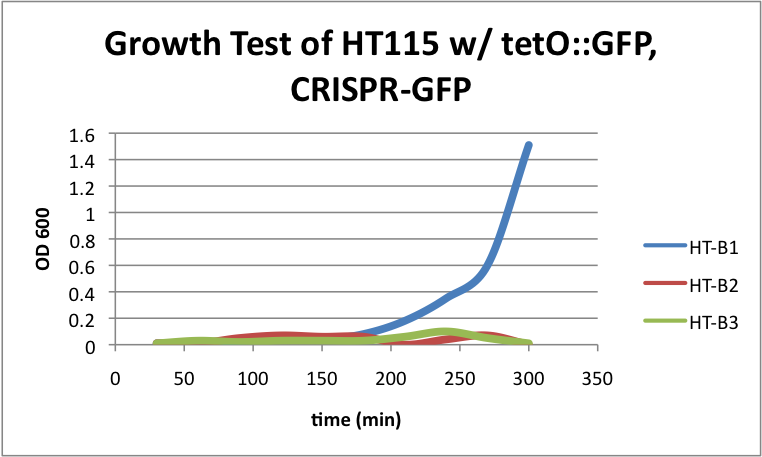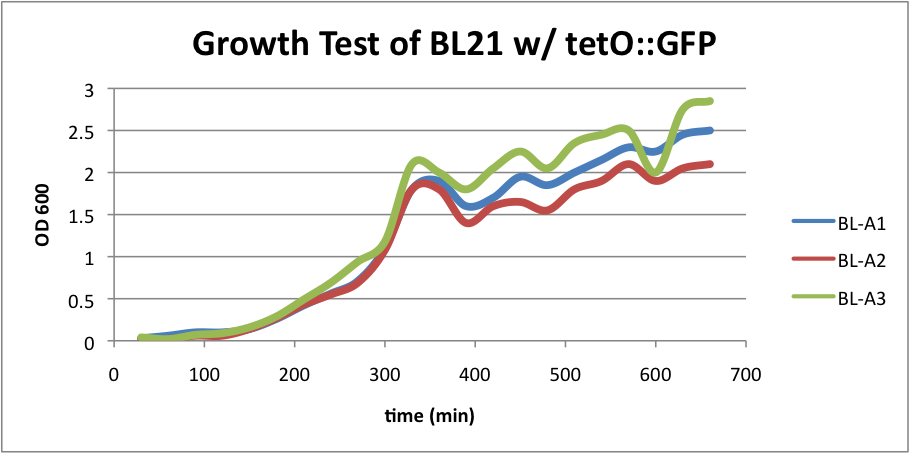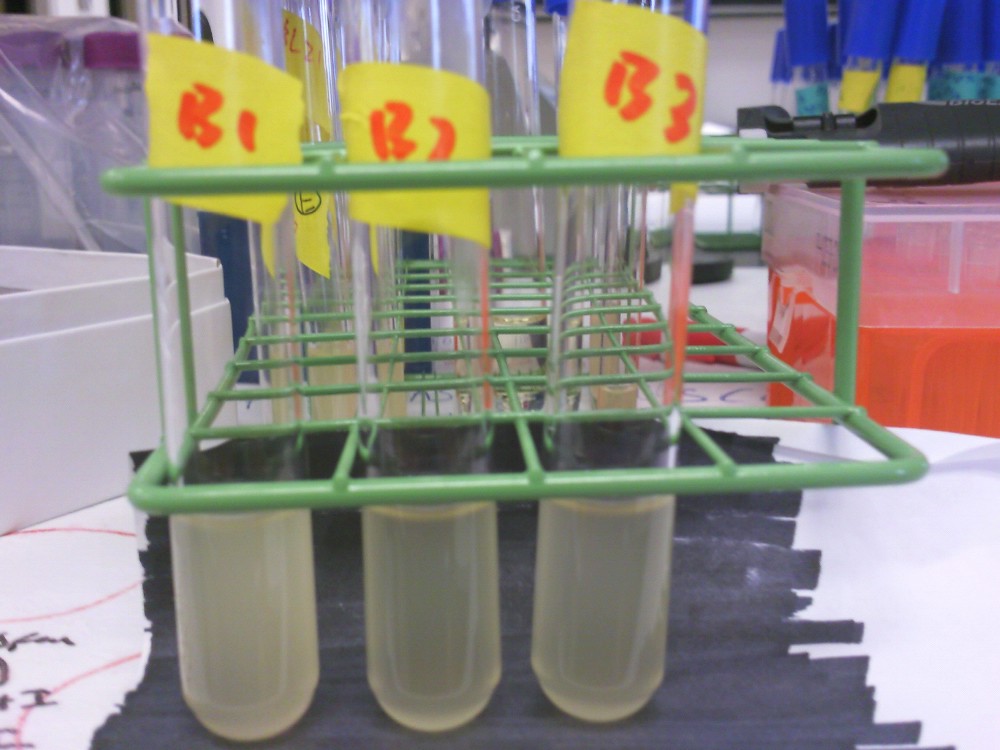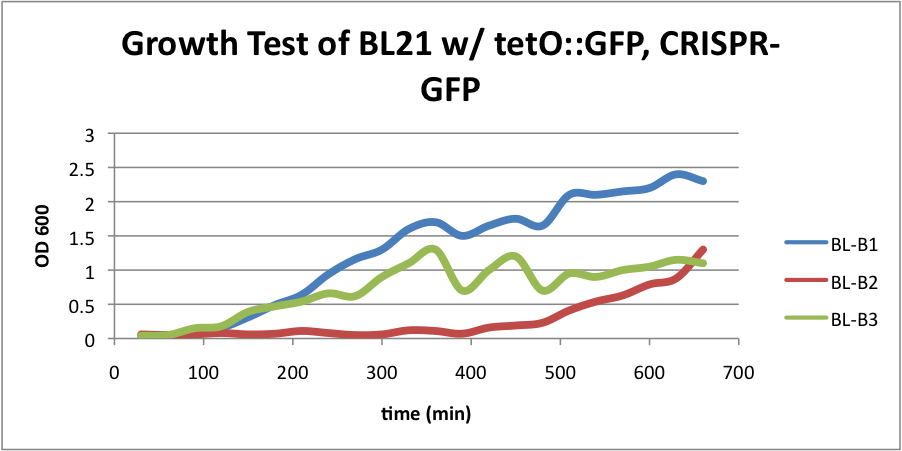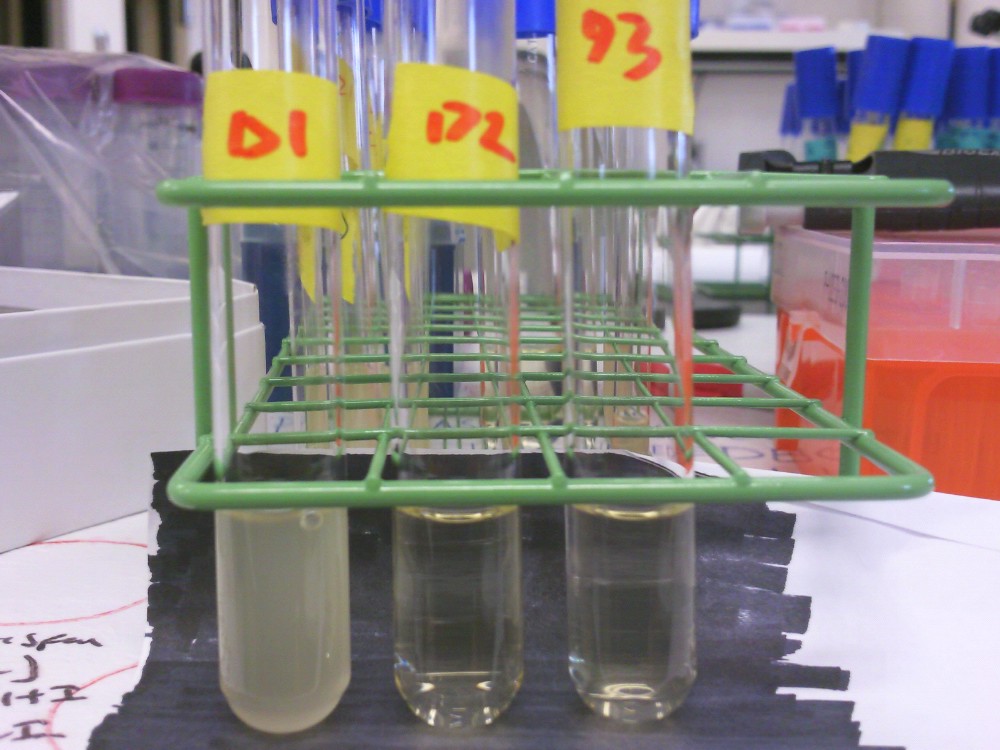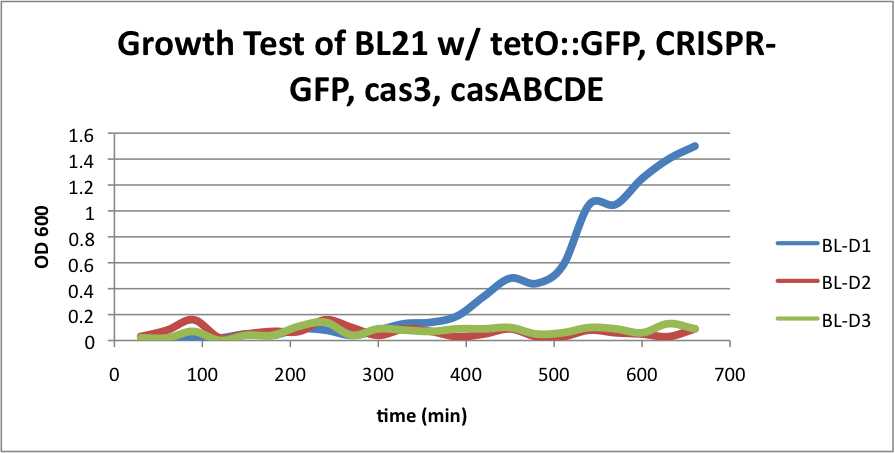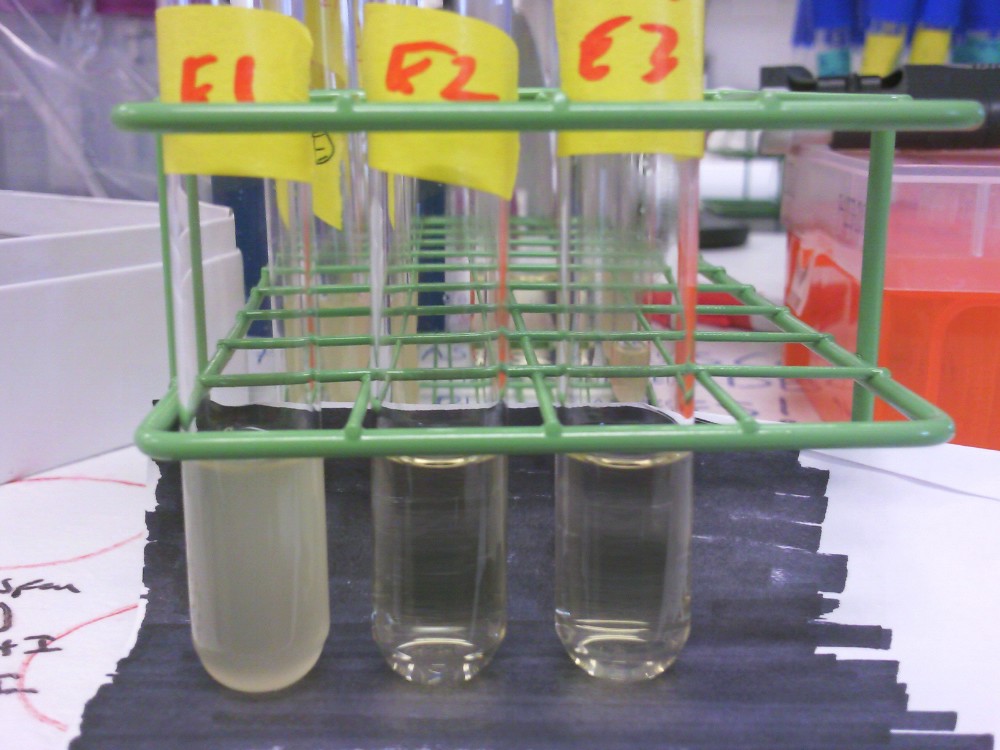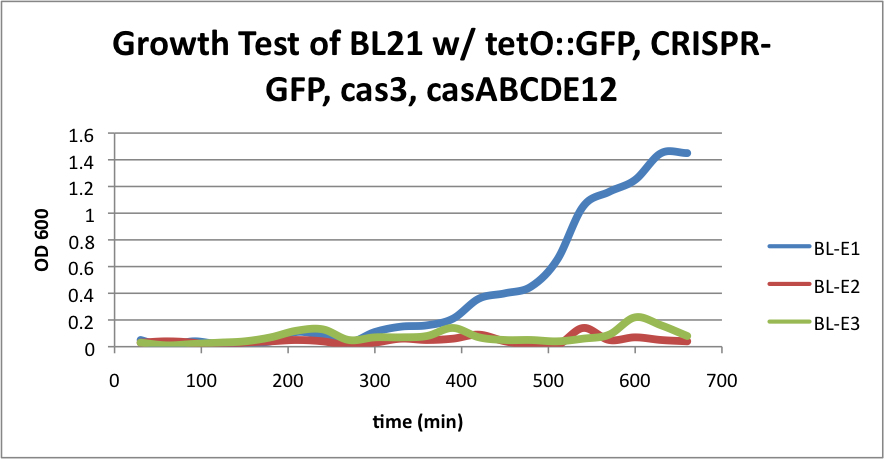|
|
Project
Overview
Bacteria protect their genome and remove foreign DNA elements through the use of the clustered, regularly interspaced short palindromic repeat (CRIPSR) system. Recently discovered, this defense mechanism can protect microorganisms against bacteriaphages. The CRISPR system comprises a transcribed locus of repeats and spacers that is activated and made functional via a family of CAS proteins. The CRISPR repeats are short DNA sequences that are almost identical in size and sequence. Between a pair of repeats is a spacer, which if complementary to a DNA element of the invading bacteriaphage, facilitates the destruction of that sequence from the bacterial cell. As such, the CRISPR/CAS system is a primitive biological defense mechanism, similar in many ways to the process of adaptive immunity in eukaryotic immune systems.
Plasmids, which are commonly used in molecular biology are also the source of horizontal gene transfer in the wild and facilitate the spread of antibiotic resistant genes among microorganisms. These plasmids can contain unique DNA sequences that could be targeted by the CRISPR/CAS system. We exploit the CRISPR/CAS system to engineer a mechanism of plasmid curing and deactivation of antibiotic resistance genes in E. coli.
We synthesized a version of CRISPR encoding a spacer that matches the GFP DNA sequence. We tested the synthetic CRISPR array against E.coli harboring a tetO::GFP plasmid that confers ampicillin resistance. Activation of CRISPER-GFP destroys the GFP-containing plasmid restoring the bacterial host's sensitivity to ampicillin. We will use the synthetic CRISPR system as a biological tool, combining it with other BioBricks for use in applications that will impact health and medicine, biotechnology, molecular biology, and genetics.
Details
Studies have shown that Escherichia coli bacteria have a system that provides immunity against viral infections and plasmid conjugation in the natural world. This recently discovered system, also known as the CRISPR/Cas system, is made of eight cas (CRISPR-associated) genes and an array of repeats and spacers known as CRISPR (Clustered Regularly Interspaced Short Palindromic Repeats). The repeats are repeating DNA sequences of approximately thirty nucleotides that are separated by unique genetic elements, spacers. The sequences of these spacers are generally derived from foreign virus DNA or plasmids. The CRISPR array expands when the bacteria collects a new spacer in a process known as CRISPR adaptation. The bacteria only confers resistance to the virus or plasmid when its CRISPR repertoire contains a spacer that matches the DNA sequence of the invading DNA. Although parts of the pathway for CRISPR adaptation and CRISPR interference are being studied, many mechanisms such as spacer integration into the CRISPR array as well as the degradation signaling pathway for CRISPR-targeted DNA remain to be discovered. Below is a schematic on a possible pathway the CRISPR/Cas system in E. coli utilize for CRISPR interference:
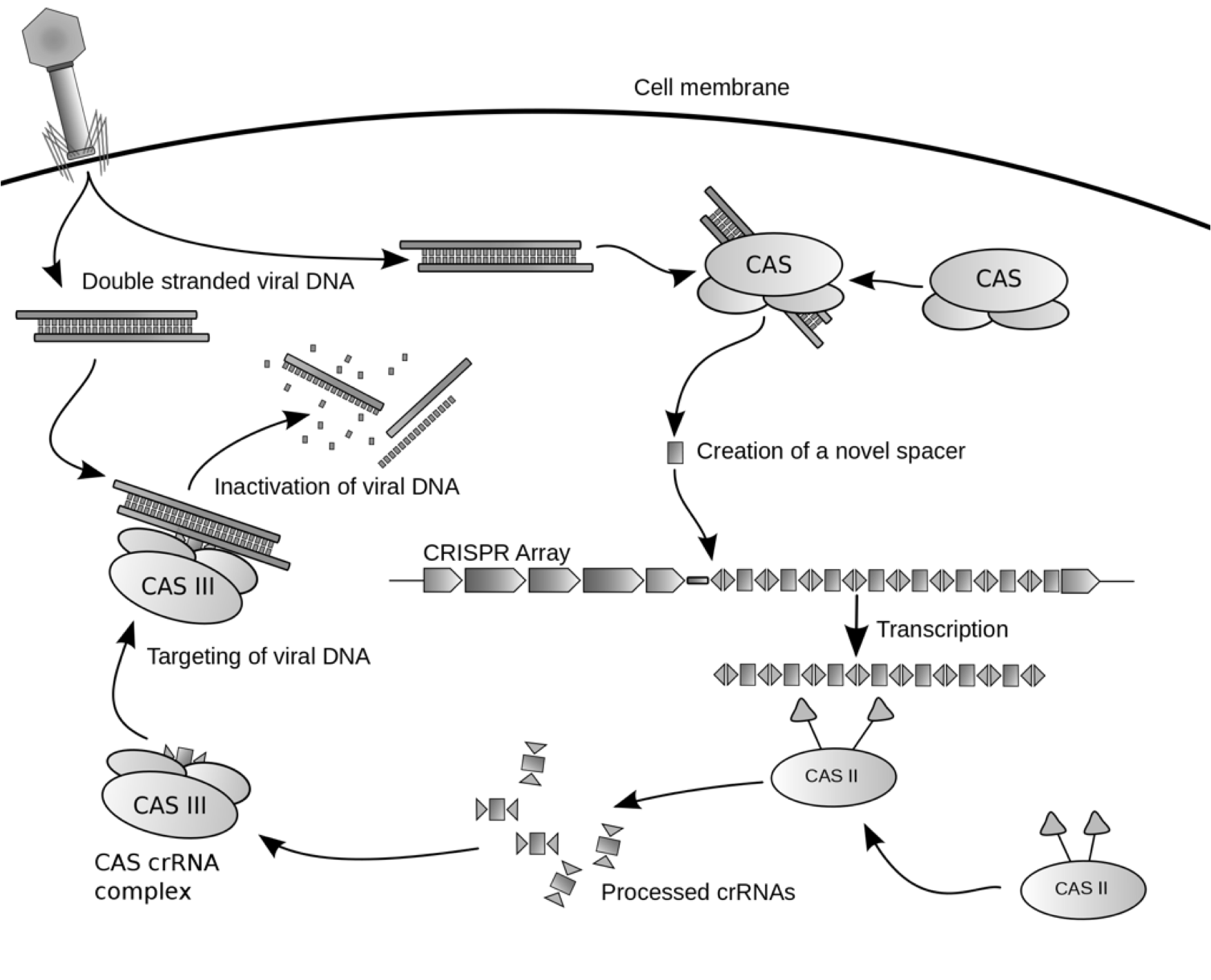 Possible mechanism of CRISPR/cas system against viral DNA Genetic Arrangement of CRISPR/Cas System
To the right is a schematic diagram of how the CRISPR/Cas system is arranged genetically.
Results
CRISPR/cas System in K12 E. coli
CRISPR/cas System in B E. coli
|
 "
"





